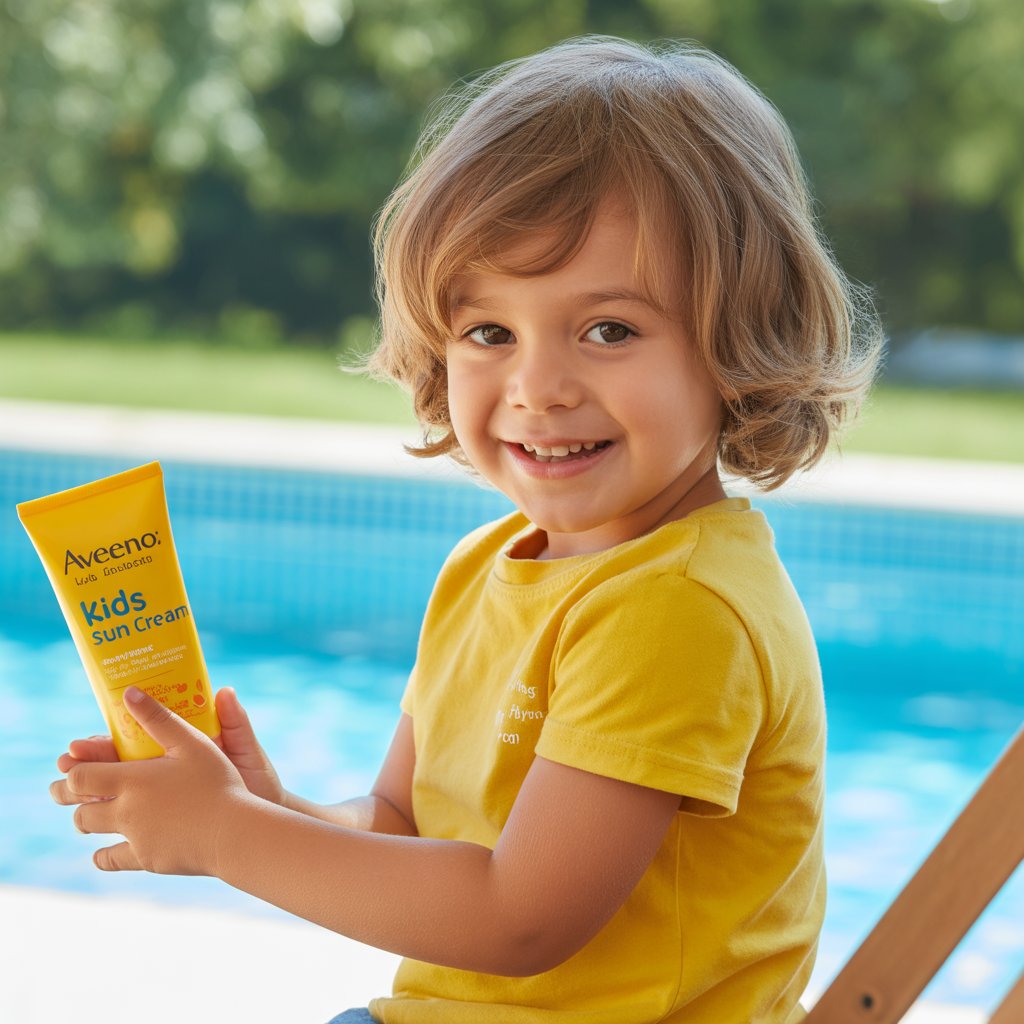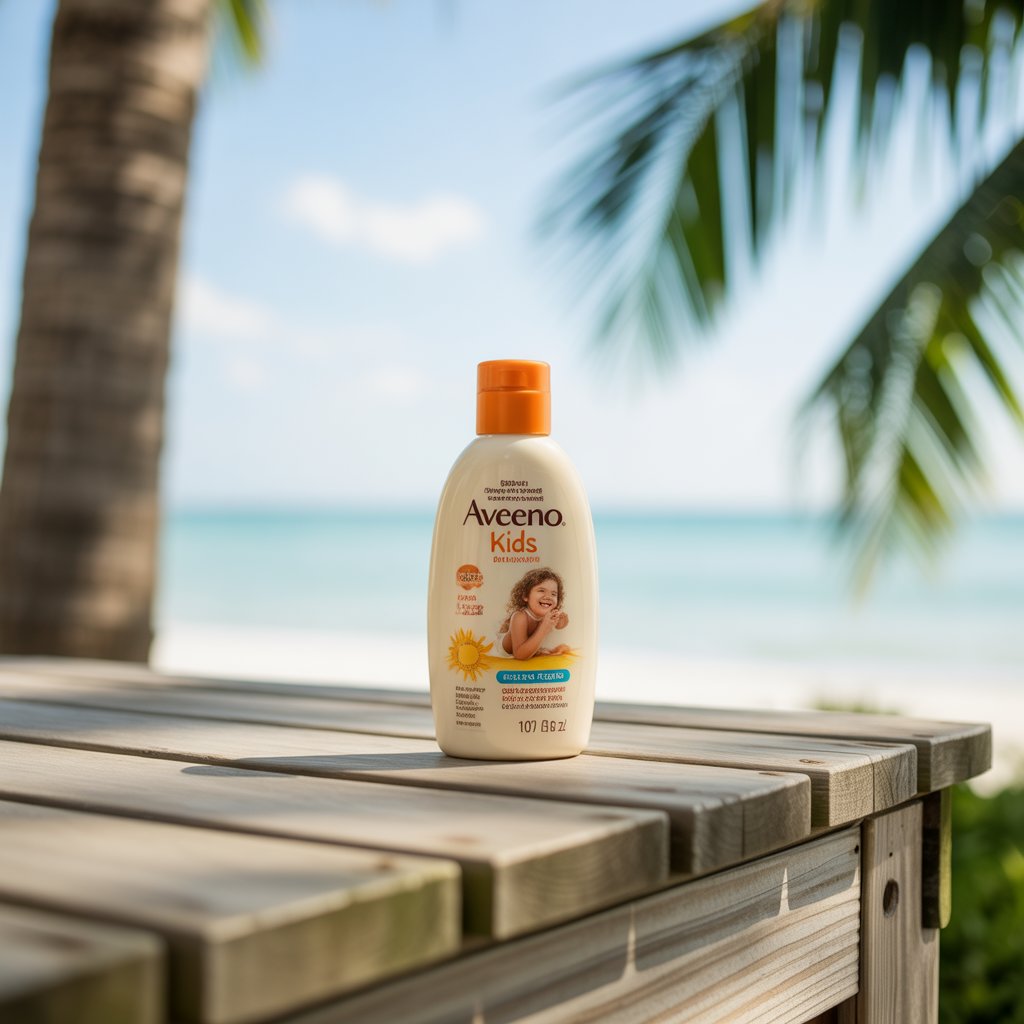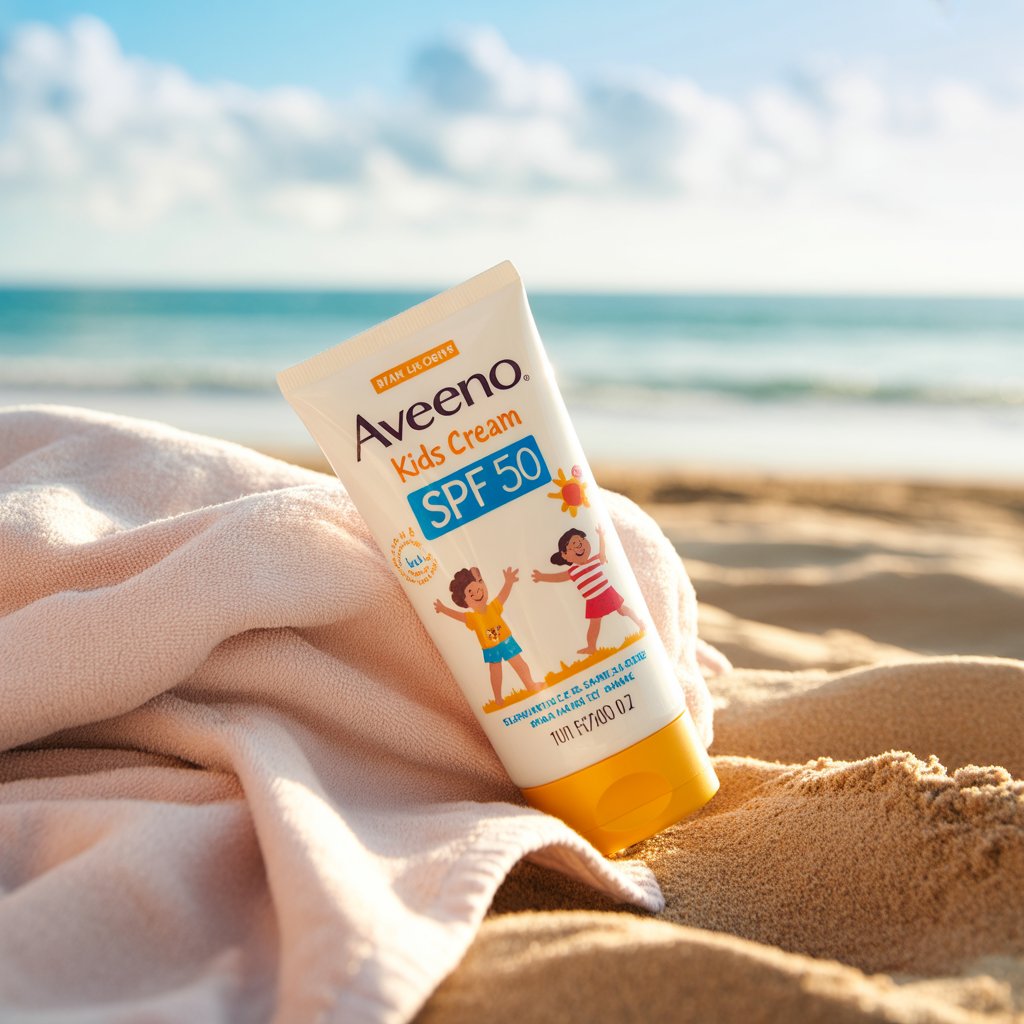Best Children’s Sun Cream – Complete Guide for Parents
Introduction to Children’s Sun Cream
Best Children’s Sun Cream: When it comes to children’s health, parents naturally go the extra mile to keep their little ones safe—and sun protection is no exception. Kids have delicate, thinner skin that’s far more vulnerable to UV damage compared to adults. In fact, just a few serious sunburns during childhood can dramatically increase the risk of skin cancer later in life. This is why choosing the right sun cream for children isn’t just about preventing discomfort from burns—it’s about long-term skin health.
Children’s sunscreen is specially formulated to be gentler on sensitive skin while still offering strong UV protection. Unlike many adult sunscreens that might include harsh chemicals or fragrances, children’s sun creams are typically hypoallergenic, fragrance-free, and tested under pediatric dermatology standards. Parents also need to consider practical factors, like how easy the sunscreen is to apply on a wriggling toddler or whether it will last through swimming and sweaty play.
This guide will break down everything you need to know—from how sun cream works to which products are best in 2025—so you can confidently protect your child’s skin every time they step outside.

Understanding How Sun Cream Works
Before diving into brands and recommendations, it’s important to understand how sun cream actually works. Sunlight contains two types of harmful rays: UVA and UVB. UVA rays penetrate deep into the skin and cause premature aging, while UVB rays are the main culprit behind sunburns. Both types can contribute to skin cancer over time.
SPF (Sun Protection Factor) mainly measures protection against UVB rays. For instance, SPF 30 blocks about 97% of UVB rays, while SPF 50 blocks around 98%. That 1% difference may sound small, but for kids who are outdoors all day, it can make a huge impact. Dermatologists generally recommend at least SPF 30 for children, though higher levels are often preferred for extended exposure.
Sun cream works by using either mineral ingredients (like zinc oxide and titanium dioxide) that sit on top of the skin and physically block rays, or chemical ingredients (like oxybenzone or avobenzone) that absorb UV radiation before it penetrates the skin. For children, mineral-based sunscreens are often the safer and less irritating option, especially for sensitive or eczema-prone skin.
In short, sun cream acts like an invisible shield—keeping harmful rays at bay so your child can enjoy the outdoors without lasting damage.
Key Ingredients in Children’s Sun Cream
When you turn the bottle of sunscreen around, the ingredient list can look intimidating—but knowing what to look for (and what to avoid) makes all the difference.
Mineral Sunscreens:
-
Contain zinc oxide or titanium dioxide.
-
Work by physically reflecting UV rays.
-
Gentle, effective, and safe for sensitive skin.
Chemical Sunscreens:
-
Include ingredients like oxybenzone, octinoxate, and avobenzone.
-
Absorb UV rays and convert them into harmless heat.
-
Often lighter and less visible but may irritate delicate skin.
What to Avoid in Children’s Sunscreens:
-
Oxybenzone and octinoxate (linked to hormone disruption and coral reef damage).
-
Added fragrances and dyes (may trigger allergic reactions).
-
Alcohol-heavy formulas (drying for skin).
Parents should look for labels like “broad spectrum”, which ensures both UVA and UVB protection, and “dermatologist-tested” or “pediatrician-approved” for extra reassurance. Hypoallergenic, paraben-free, and reef-safe options are particularly beneficial for eco-conscious families and kids with sensitive skin conditions.
Ultimately, the safest bet is a mineral-based, broad-spectrum sunscreen with SPF 30–50, designed specifically for children.

Factors to Consider When Choosing the Best Sun Cream for Children
Not all sun creams are created equal, and choosing the right one depends on your child’s unique needs. Here are some key factors to weigh before making a purchase:
-
Skin Type & Sensitivity – Kids with eczema or very sensitive skin may benefit from fragrance-free, mineral-based formulas.
-
Water Resistance – If your child loves swimming or outdoor sports, opt for a water-resistant sunscreen (40–80 minutes of protection in water).
-
Ease of Application – Lotions are thorough but take longer to apply, sprays are quick but can be uneven, and sticks are great for faces but harder for full-body coverage.
-
Age Appropriateness – Babies under 6 months shouldn’t use sunscreen (they should be kept out of direct sun instead), while toddlers and older kids need stronger, longer-lasting formulas.
-
Brand Reputation – Trustworthy brands often go through stricter safety testing. Look for pediatrician-approved options.
Parents should also remember that sunscreen is only one piece of the puzzle. Pairing sun cream with protective clothing, hats, and shade is the best way to keep children safe under the sun.
Top 10 Best Children’s Sun Creams in 2025
With so many options available, narrowing down the best sunscreen for kids can feel overwhelming. To save you time, here’s a roundup of the top-rated children’s sun creams in 2025, based on dermatologist recommendations, safety, and parent reviews:
-
Blue Lizard Kids Mineral Sunscreen SPF 50 – Reef-safe, water-resistant, and gentle on sensitive skin.
-
Aveeno Baby Continuous Protection SPF 50 – Hypoallergenic, fragrance-free, and great for everyday use.
-
Thinkbaby Safe Sunscreen SPF 50+ – Mineral-based, eco-friendly, and effective for babies and toddlers.
-
Neutrogena Pure & Free Baby SPF 50 – Dermatologist-tested, broad-spectrum, and lightweight.
-
Badger Kids Sunscreen Cream SPF 40 – Organic ingredients, biodegradable, and safe for sensitive skin.
-
Coppertone Kids Tear-Free Lotion SPF 50 – Water-resistant, non-greasy, and budget-friendly.
-
Babo Botanicals Sheer Zinc Sunscreen SPF 30 – Natural formula with nourishing botanicals.
-
Sun Bum Kids SPF 50 Lotion – Fun branding kids love, broad-spectrum protection parents trust.
-
La Roche-Posay Anthelios Dermo-Pediatrics SPF 50+ – Advanced sun protection with dermatologist approval.
-
Banana Boat Kids Sport Sunscreen SPF 50 – Ideal for active kids who love sports and swimming.
Each of these sunscreens has its pros and cons—some excel at water resistance, while others shine in gentle formulations. The best one for your child depends on their activity level, skin sensitivity, and your family’s lifestyle.

FAQs
1. At what age can babies start wearing sunscreen?
Babies under 6 months should not use sunscreen. Their skin is too delicate, so it’s best to keep them in the shade, dress them in lightweight protective clothing, and use wide-brimmed hats. From 6 months onward, parents can apply baby-formulated mineral sunscreens that are fragrance-free and hypoallergenic.
2. How often should children reapply sunscreen?
Children should reapply sunscreen every 2 hours, or immediately after swimming, sweating, or towel-drying. Even water-resistant formulas lose effectiveness after about 80 minutes in water, so frequent reapplication is key.
3. Is spray sunscreen safe for kids?
Spray sunscreens can be safe, but parents should be cautious. Spraying directly onto the face can cause inhalation, which isn’t recommended. Instead, spray onto your hands first and rub it onto your child’s skin for even coverage. Lotions are often a safer choice for younger children.
4. What SPF is best for everyday use?
Dermatologists recommend at least SPF 30 for kids, which blocks 97% of harmful UVB rays. For extended outdoor play, beach days, or high-sun climates, SPF 50 provides extra protection without being too heavy.
5. Can children use adult sunscreen in emergencies?
Yes, children can use adult sunscreen if necessary, as long as it’s broad-spectrum and SPF 30 or higher. However, many adult sunscreens contain fragrances, alcohol, or chemical filters that may irritate a child’s sensitive skin. For regular use, it’s best to stick with children’s formulations.
Conclusion – Choosing the Right Sun Cream for Your Child
Protecting your child from the sun is one of the simplest yet most powerful steps you can take for their long-term health. Children’s skin is delicate and far more prone to sun damage than that of adults, which is why finding the right sun cream is so important. The best sunscreen for kids is one that offers broad-spectrum protection, is gentle on sensitive skin, and is easy enough for parents to apply regularly and correctly.
In the end, the best children’s sun cream is the one that your child tolerates well, fits your family’s lifestyle, and encourages daily use. With the right choice, you can give your kids the freedom to play in the sunshine while safeguarding their skin for years to come.
